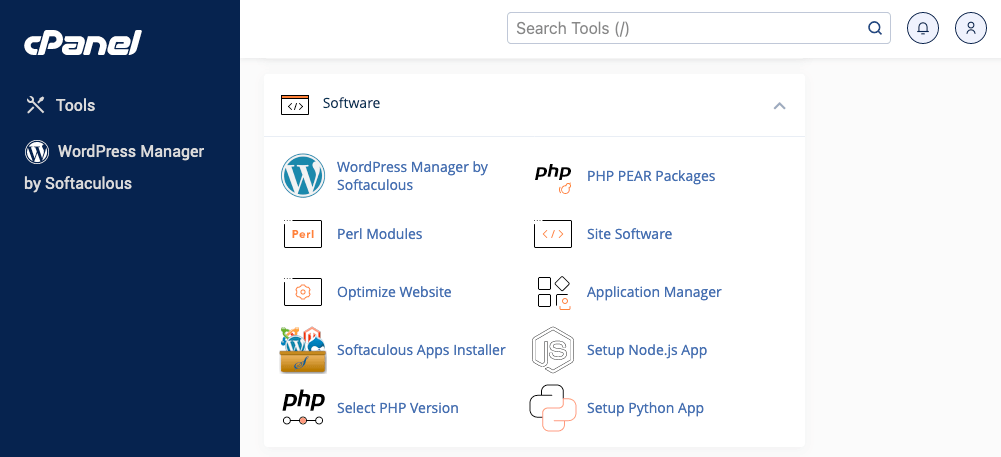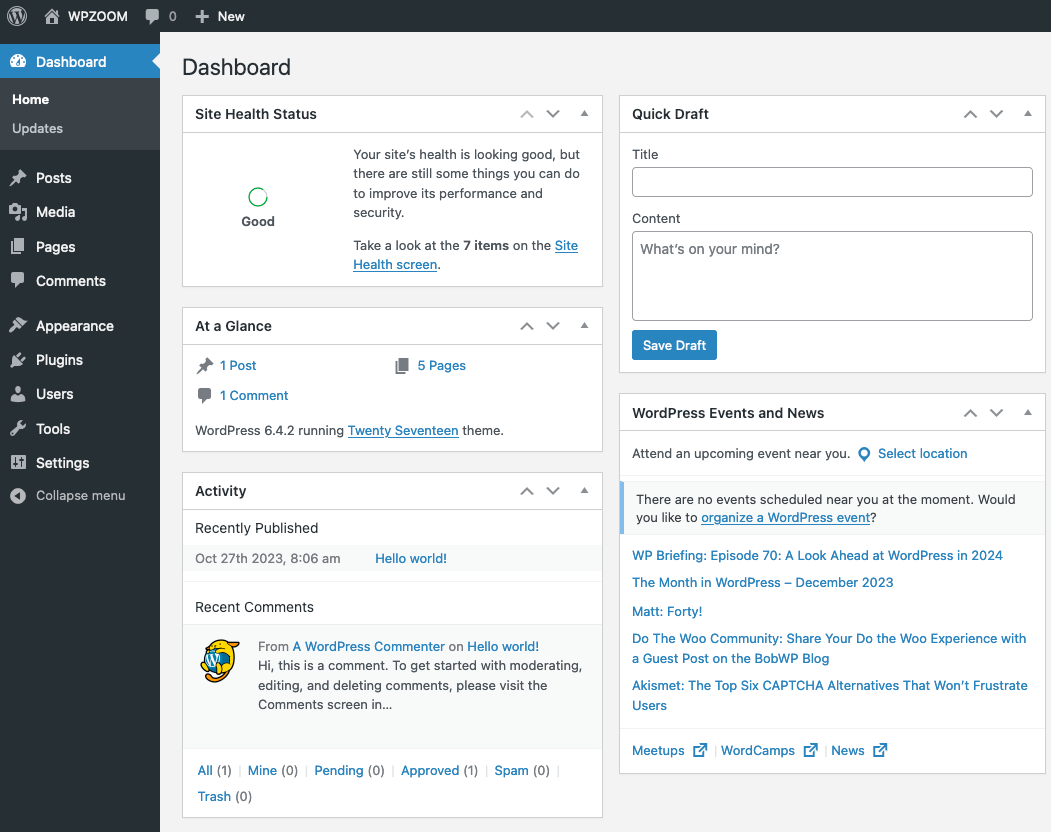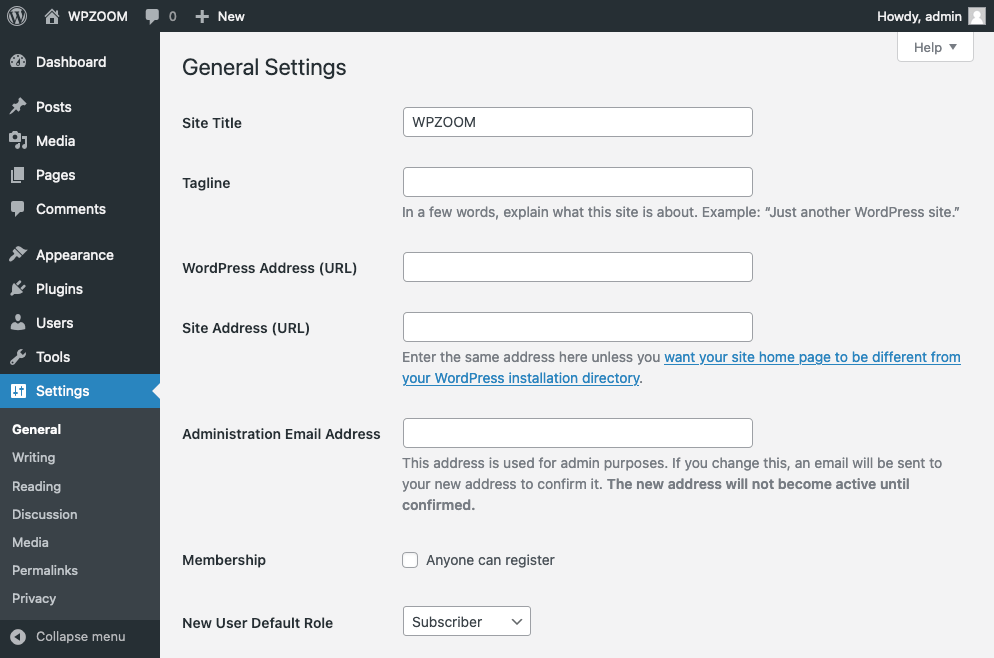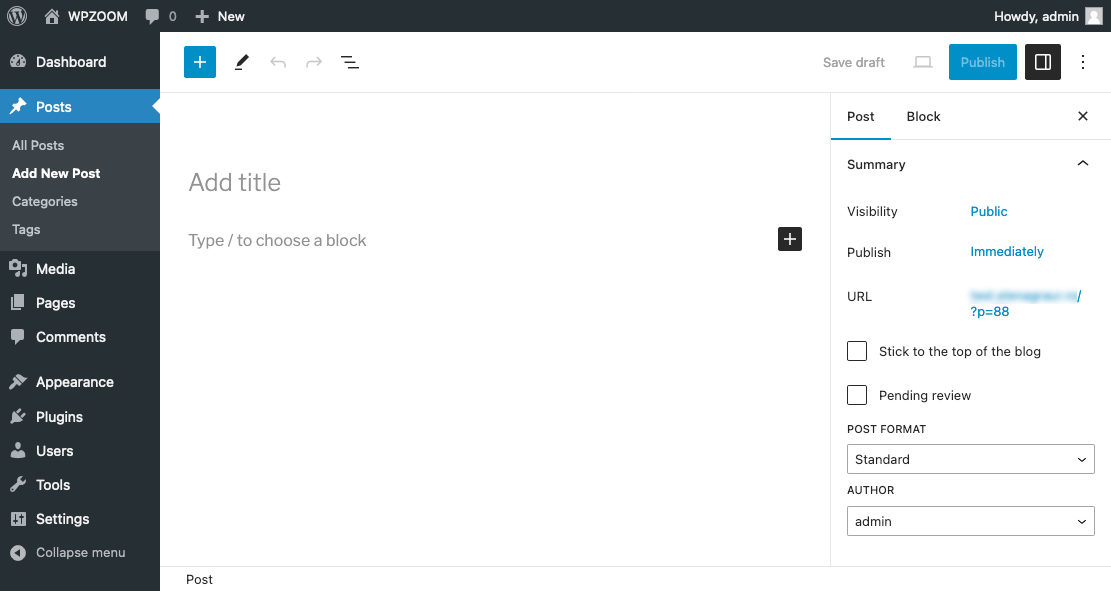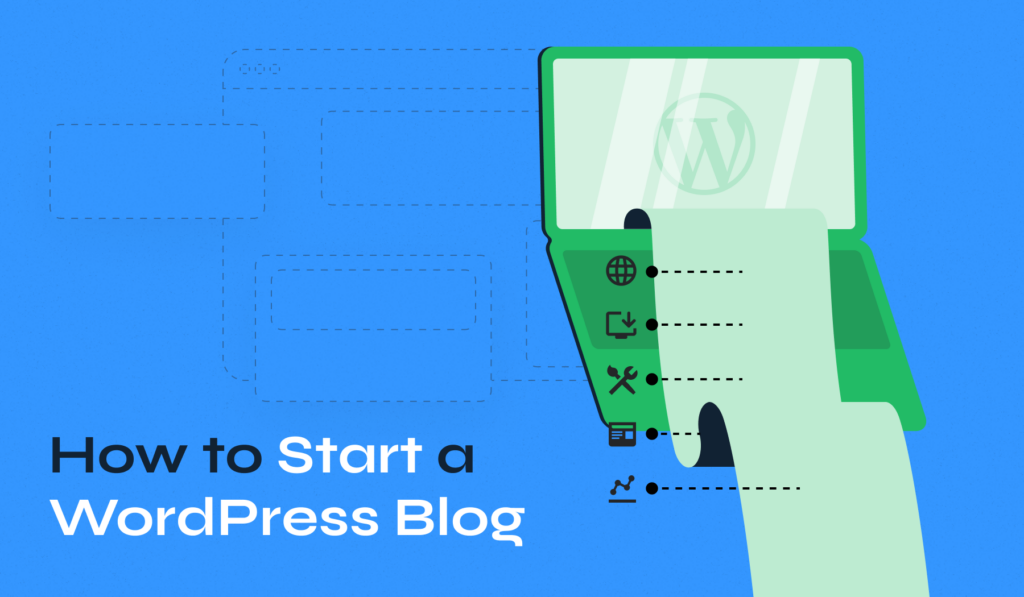
Ready to share your unique perspective with the world? Starting a WordPress blog is an exciting way to express your ideas and connect with a broader audience.
In this guide, we’ll show you exactly how to start a WordPress blog, covering everything from domain registration to your first published post. With WordPress blogging, the possibilities are endless, and this guide will help you turn your ideas into an engaging platform that attracts and delights your audience.
Quick Guide to Starting a WordPress Blog
Here’s a quick summary of the critical steps involved in setting up a blog on WordPress:
- Step 1: Register a Domain Name
- Step 2: Select a Hosting Provider
- Step 3: Install WordPress
- Step 4: Select and Customize a Theme
- Step 5: Customize Blog Settings
- Step 6: Install Essential Plugins
- Step 7: Create Your First Blog Post
- Step 8: Promote and Grow Your Blog
- Step 9: Maintain Your Blog
Now, let’s explore each aspect in more detail to ensure you’re well-equipped to launch a WordPress blog successfully.
WordPress Blogging for Beginners: 9 Essential Steps
The steps to start a blog are relatively straightforward. Still, some parts are slightly unintuitive, and this guide will make the whole process much easier for you.
1. Register a Domain Name
Your domain name is your blog’s unique address on the internet, acting as the first impression visitors will have of your site. It’s crucial to choose a name that is memorable, relevant, and easy to spell.
Here are some tips for choosing the perfect domain name:
- Reflect Your Blog’s Theme or Brand: Your domain should give visitors an idea of what your blog is about. For example, if you’re writing about healthy recipes, consider something like “HealthyEatsHub.com.”
- Keep It Simple and Catchy: Avoid using complex words or unusual spellings. A straightforward name is easier to remember and type.
- Avoid Numbers and Hyphens: These can be confusing and are often forgotten when visitors try to recall your domain.
- Check Availability: Use domain registrars like Namecheap, GoDaddy, or your web hosting provider to see if your desired domain is available. Ensure it doesn’t infringe on any trademarks.
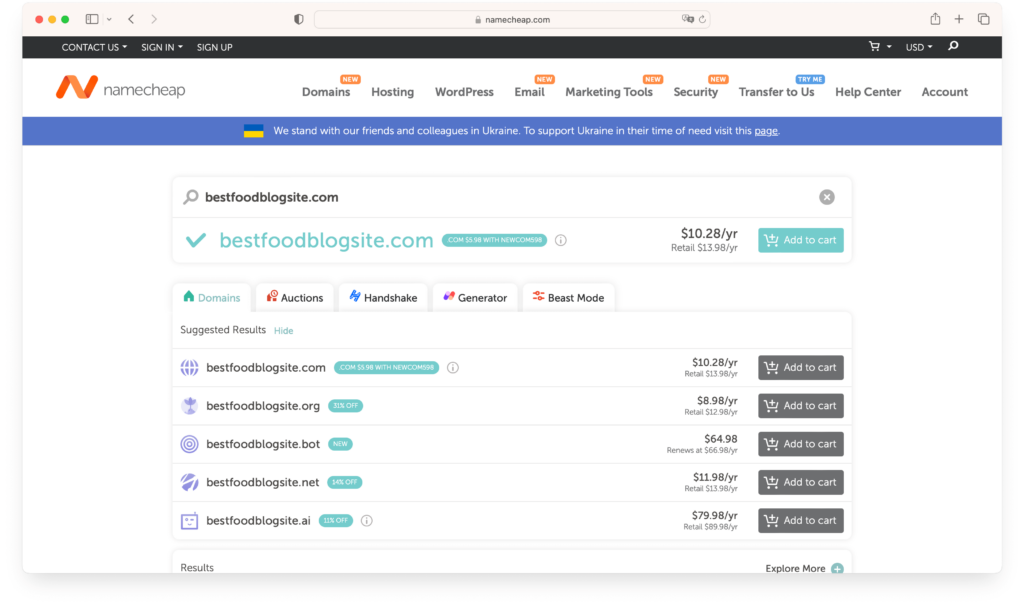
If you’re struggling to come up with ideas, domain name generators like DomainWheel can be a big help. These tools suggest names based on keywords you provide, sparking inspiration and showing available options.
Registering a domain name typically costs around $10-15 per year, a small investment for establishing your online presence.
2. Selecting a Hosting Provider
Choosing the right hosting provider is crucial for the performance, security, and reliability of your WordPress blog. Your hosting provider is essentially the home for your blog, ensuring it’s accessible to visitors at all times.
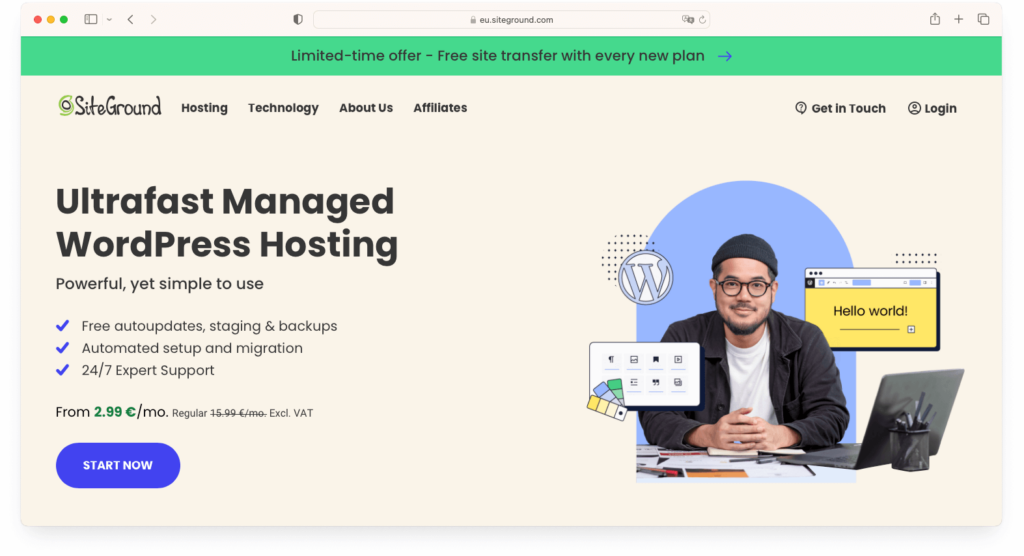
When selecting a hosting provider, consider the following factors:
- Uptime Guarantee: Look for providers that offer at least a 99.9% uptime guarantee. This ensures your blog will be available to visitors without frequent interruptions.
- Customer Support: Reliable customer support is essential, especially if you encounter technical issues. Opt for providers with 24/7 support through various channels like chat, phone, and email.
- WordPress-Specific Features: Many hosts offer features tailored to WordPress users, such as one-click installations, automatic updates, and optimized performance.
- Pricing: While affordability is important, don’t compromise on essential features. Look for plans that offer good value, balancing cost with necessary functionalities like free SSL certificates, backups, and scalability options.
- Reviews and Reputation: Research reviews and testimonials from other users to gauge the credibility and performance of potential hosting providers. Consistent positive feedback and good customer service responses are critical indicators of a reliable host.
Popular hosting providers like SiteGround, Bluehost, and WP Engine are known for their WordPress compatibility and often start at around $7.99 per month. These providers frequently offer promotions and packages that include domain registration, making the setup process more seamless.
When choosing a hosting plan, draw up a cost comparison chart to weigh the benefits of different providers. While free hosting can be tempting, it often comes with limitations such as slower speeds, limited storage, and lack of support. Investing in a reputable hosting service can significantly impact your blog’s performance and growth potential.
Additionally, many hosting providers offer domain registration services, which can simplify managing your blog’s technical aspects. Having both your domain and hosting under one roof can make troubleshooting easier, providing a single point of contact for any issues related to your blog.
3. Installing WordPress
With your domain and hosting ready, the next crucial step is installing WordPress, the platform that will power your blog. WordPress is celebrated for its user-friendliness and flexibility, making it an excellent choice for bloggers of all levels.
Regardless of your hosting provider, installing WordPress is typically straightforward and similar across different platforms:
- Log into Your Hosting Control Panel: Most hosting providers use control panels like cPanel, Plesk, or custom dashboards. Access your control panel using the credentials provided by your hosting provider.
- Locate the WordPress Installer: Many hosting providers offer a one-click WordPress installation tool. You can usually find this under sections labeled Website or Software and Services. Common installers include Softaculous, Fantastico, and QuickInstall.
- Start the Installation Process: Launch the WordPress installer, and you will be guided through a straightforward setup process. Select the domain where you want to install WordPress.
- Enter Site Details: Provide basic details such as the name of your WordPress site, an administrative username, a password, and an admin email address. Choose strong, unique credentials to secure your site.
- Configure Advanced Options (if necessary): Some installers allow you to configure advanced options like database names or table prefixes. For beginners, the default settings are usually sufficient.
- Complete the Installation: Proceed with the installation, which typically takes just a few minutes. The installer will automatically set up WordPress on your chosen domain.
- Access the WordPress Dashboard: Once the installation is complete, log into your WordPress dashboard using the admin credentials you set. You can access your dashboard by navigating to yourdomain.com/wp-admin/.
- Familiarize Yourself with the Dashboard: Spend some time exploring the WordPress dashboard. Familiarize yourself with its layout and various settings, which will make your blogging experience smoother.
If you encounter any issues during the installation, don’t hesitate to contact your hosting provider’s support team. They are generally well-equipped to assist with WordPress-related queries and can help troubleshoot any problems.
Installing WordPress lays the foundation for your blogging adventure. With the platform ready, you can start shaping your blog to reflect your vision and start sharing your content with the world.
4. Selecting and Customizing a Theme
Now that WordPress is installed, it’s time to make your blog visually appealing and unique. Your theme determines the overall look and feel of your blog, impacting how visitors perceive and interact with your content. Thankfully, WordPress offers various themes to choose from, catering to every niche and style.
We recommend you look through our collection of WordPress themes to find a theme that aligns perfectly with your blog’s niche. Whether you’re running a food blog, a travel diary, a business site, or any other type of blog, our collection offers themes tailored to different niches and styles.
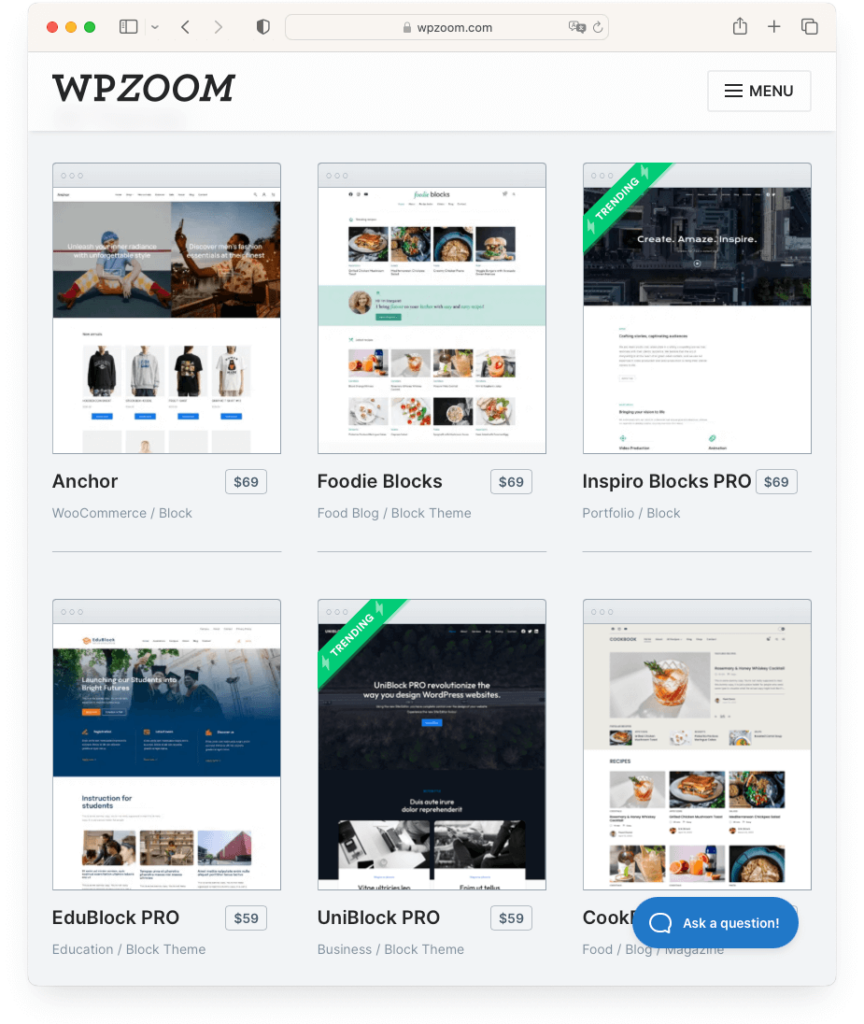
Here are a few recommendations:
- Inspiro PRO is a professional portfolio theme focused on the Elementor page builder. It is extremely popular with creatives. If you want to show off your work, this is your theme.
- Foodica is our food blog WordPress theme, which works great for magazine, travel, or recipe blogs.
- Indigo is one of our magazine WordPress themes. It combines the design of a magazine with the classic blog look.
- VideoBox is the theme to choose if you want a video WordPress theme. For mixing video content and your blog, look no further.
- Presence – finally, if you want a single theme to do it all, this is our multipurpose theme, which can do anything.
Once you’ve selected a theme from our collection, installing and customizing it to fit your style and needs is a breeze. Our themes are user-friendly, offering intuitive options for customization. You can effortlessly adjust colors, fonts, layouts, and other elements to create a unique look for your blog. Plus, with responsive design as a standard feature, you can rest assured that your blog will look great on all devices.
Suggested Reading:
Consider Using a Page Builder
In addition to selecting a suitable theme, consider using page builders like Elementor or WPBakery. These tools offer a drag-and-drop interface, allowing you to create custom layouts and add complex design elements without needing to code.
While themes provide the overall design framework for your blog, page builders give you the creative freedom to customize individual pages and posts to your exact specifications.
5. Customizing Blog Settings
With your theme in place, the next step is to customize your blog settings. Properly configuring your settings ensures that your WordPress blog functions smoothly and provides a better experience for your visitors. Here’s how to effectively set up and customize your blog settings:
- Site Title and Tagline: Navigate to Settings > General. Set your site title and tagline to reflect your blog’s identity and purpose. These appear in the browser tab and can impact your SEO.
- Timezone and Date Format: On the same page, adjust the timezone, date, and time format to match your location. This ensures accurate timestamps for your posts and comments.
- Permalink Structure: Go to Settings > Permalinks. Choose a permalink structure that is easy to read and SEO-friendly, such as Post name. This helps improve your search engine ranking and makes URLs more understandable for visitors.
- Homepage Display: Decide what visitors see when they land on your site. You can set your homepage to display your latest posts or a static page by navigating to Settings > Reading. If you choose a static page, make sure to also set a posts page where your blog entries will appear.
- Setting Up a Navigation Menu: A well-structured navigation menu is vital to a user-friendly blog. It guides visitors through your site and helps them quickly find what they want. Go to Appearance > Menus to create and customize your navigation menu.
- Comment Management: Head to Settings > Discussion. Configure how you want to handle comments. You can require approval for comments before they appear, enable threaded comments for better interaction, and set up email notifications for new comments.
Properly configured settings improve user experience and help you manage your blog more effectively as you grow your WordPress blogging presence.
6. Installing Essential Plugins
Enhancing your WordPress blog with plugins is similar to adding apps to your smartphone. Plugins add functionality and features that extend the capabilities of your site. However, with thousands of plugins available, it’s essential to choose the ones that will genuinely benefit your blog without compromising performance.
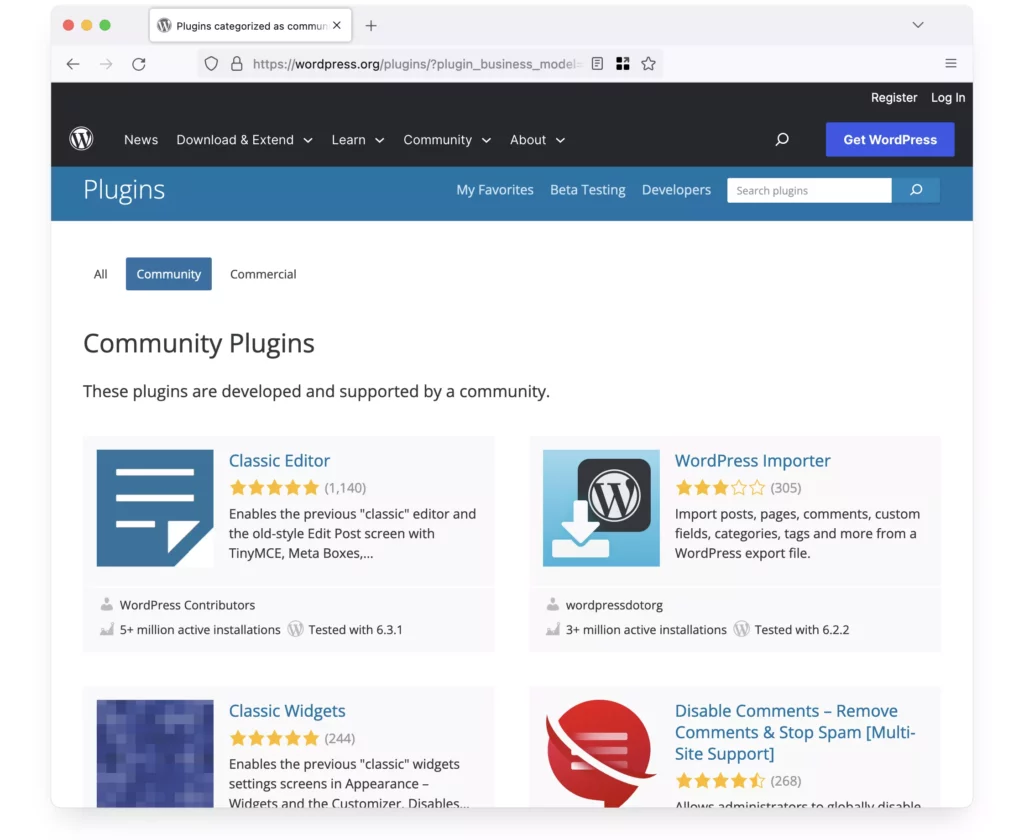
Determine what functionalities you want to add to your blog. There’s likely a plugin for SEO, social media integration, security, or e-commerce. Each plugin comes with its own settings and configuration options.
We’ve curated a list of recommended plugins to assist you in this. This list includes plugins across various categories, ensuring access to reliable and quality plugins.
Regularly update your plugins to maintain your blog’s security and efficiency. Outdated plugins can be a security risk and may not function properly with the latest version of WordPress.
While plugins are powerful tools, having too many can slow down your WordPress website. Be selective and install only those that are essential for your blog.
Suggested Reading:
7. Creating Your First Blog Post
Now that your WordPress blog is set up and customized, it’s time for the exciting part: creating your first blog post. This is where your ideas and creativity come to life, engaging your audience with compelling content. Here’s how to craft and publish your initial blog post effectively:
- Navigate to the WordPress Editor: In your WordPress dashboard, go to Posts > Add New. This opens the WordPress editor, a user-friendly interface where you can write and format your post.
- Crafting Your Post Title: Start by adding a title in the designated area. Your title should be catchy and informative, giving readers a clear idea of what to expect from your post. Aim for something that grabs attention and sparks curiosity.
- Writing and Formatting Your Content: Use the main content area to write your post. Break your content into sections with headings to make it easy to read. Utilize the toolbar to format text, add bullet points, and create numbered lists.
- Adding Media: Enhance your post with images, videos, and other media. Click the Add Media button to upload files from your computer or select from your media library. Visual elements can make your post more engaging and help illustrate your points. Ensure images are optimized for web use to maintain fast loading times.
- Utilizing Blocks: WordPress’s Gutenberg editor uses blocks for different types of content. Use paragraph, image, heading, list, quote, and other blocks to structure your post effectively. Experiment with different block types to add variety to your content.
- Adding Categories and Tags: Organize your post by adding relevant categories and tags. This helps readers find related content and improves site navigation. Go to the right sidebar in the editor to add categories and tags.
- SEO Optimization: Use an SEO plugin like Yoast SEO to optimize your post. Fill in the meta description, focus keyword, and SEO title fields. Follow the plugin’s suggestions to improve your post’s search engine ranking.
- Previewing Your Post: Before publishing, click the Preview button to see how your post will look live. Check for any formatting issues, broken links, or typos. Make necessary adjustments to ensure everything appears as intended.
- Publishing Your Post: Once you’re satisfied with your post, click Publish to make it live. If you prefer to schedule it for later, select the desired date and time in the Publish section.
Creating your first blog post is a significant milestone in your WordPress blogging journey. By focusing on quality content, engaging formatting, and SEO best practices, you set the stage for a successful blog that resonates with your audience. Remember, consistency is key—keep writing and publishing regularly to grow your blog and maintain reader interest.
8. Promoting and Growing Your Blog
Creating valuable content is just the beginning of your blogging journey. To reach a wider audience and build a community around your blog, effective promotion is essential. Here’s how to promote and grow your WordPress blog:
- Optimize for Search Engines (SEO): Identify keywords relevant to your niche and incorporate them naturally into your posts. Ensure each post has a compelling meta title and description. Use header tags (H1, H2, H3) to structure your content and include alt text for images. Link to other relevant posts within your blog to keep readers engaged and improve your site’s SEO.
- Leverage Social Media: Post links to your blog posts on social media platforms where your target audience is active. Use engaging visuals and captions to attract clicks. Participate in Facebook groups, LinkedIn communities, and forums related to your niche. Share your expertise and link to your blog when relevant. Design infographics, videos, and other shareable content that encourages followers to share with their networks.
- Email Marketing: Add email sign-up forms to your blog to capture visitor emails. Offer incentives like free ebooks, checklists, or exclusive content to encourage sign-ups. Send out regular newsletters with updates, new posts, and special offers. Keep your audience engaged and informed.
- Engage with Your Audience: Reply to comments on your blog and social media channels to build a connection with your readers. Encourage readers to leave feedback and suggestions. Use this input to improve your content and address your audience’s needs. Use social media platforms or live streaming tools to host Q&A sessions, allowing your audience to interact with you directly.
- Collaborate with Others: Write guest posts for other blogs in your niche. This exposes your content to a new audience and builds backlinks to your site. Partner with other bloggers, influencers, or brands for collaborations such as interviews, joint webinars, or co-authored content. Reach out to industry publications and influencers to feature your blog or mention your content in their posts.
- Utilize Paid Advertising: Use Facebook, Instagram, and X (ex Twitter) ads to promote your blog posts to a targeted audience. Set a budget and monitor the performance to ensure a good return on investment. Run Google Ad campaigns to appear in search results for specific keywords related to your blog’s content.
Promoting and growing your blog is an ongoing process that requires dedication and strategic effort. By implementing these strategies, you can increase your blog’s visibility, build a loyal readership, and create a thriving online community around your WordPress blog.
WPZOOM offers specialized social media tools to enhance social media integration:
- Social Icons Widget: A simple yet powerful tool for adding social media icons to your website, linking directly to your profiles.
- Instagram Widget: It allows you to display your latest Instagram posts directly on your website.
9. Maintaining Your Blog
A successful blog is about more than just great content and initial setup; it requires ongoing maintenance to ensure it remains secure, efficient, and relevant. Regular maintenance helps improve your site’s performance, protect it from potential threats, and keep your content fresh and engaging. Here’s how to maintain your WordPress blog effectively:
- Regular Updates: Keep your WordPress installation up to date. New updates often include security patches, bug fixes, and new features that keep your blog running smoothly. Regularly update your themes and plugins to their latest versions. This enhances functionality and improves security and compatibility.
- Backups: Regularly back up your blog. Ensure backups are stored in a secure location, such as a cloud service or an external drive. Regular backups create restore points, which are crucial in case of data loss, hacking, or other emergencies. Test your backup and restore process periodically to ensure it works correctly.
- Security Checks: Implement security measures to protect your blog from threats. This includes using strong passwords, installing security plugins, and regularly scanning for malware. Stay informed about the WordPress community’s latest security best practices and updates.
- Performance Optimization: Monitor your blog’s loading speed and performance. Slow-loading pages can deter visitors and affect your SEO. Optimize images, use caching plugins, and consider a content delivery network (CDN) to enhance speed.
- Regularly Update Your Blog: Publish new content regularly to keep your audience engaged and attract new visitors. Refresh and update old blog posts with new information and insights. This keeps your content relevant and can improve its search engine ranking.
- Monitor and Analyze Performance: Install Google Analytics to track your blog’s performance. Analyze traffic sources, user behavior, and popular content to refine your strategy. Pay attention to feedback from your audience and key performance metrics like bounce rate, average session duration, and conversion rates.
Maintaining your blog is an ongoing process that requires attention and effort. By regularly updating, securing, and optimizing your site, you can ensure that your blog remains a dynamic and secure platform for your voice and creativity.
Bottom Line
You’ve now equipped yourself with the knowledge to set up, customize, and maintain your WordPress blog, laying a solid foundation for your online presence. Each step, from selecting the perfect domain and hosting provider to creating engaging content and optimizing for SEO, is a crucial building block towards a successful blog.
Remember, the key to a thriving blog lies in consistent effort, adaptability, and a genuine passion for your subject. Keep experimenting, learning, and evolving as you start this exciting journey. The blogging world is dynamic, and staying curious and adaptable will be your greatest asset. Engage with your audience, listen to feedback, and let your unique voice shine through your content.
Don’t hesitate to take the first step. Every great blog started with a single post, and yours is no exception. Embrace the process, enjoy the creative expression, and watch your blog grow from a simple platform to a vibrant community. Your dedication and enthusiasm will drive your success in the world of WordPress blogging. Happy blogging!
